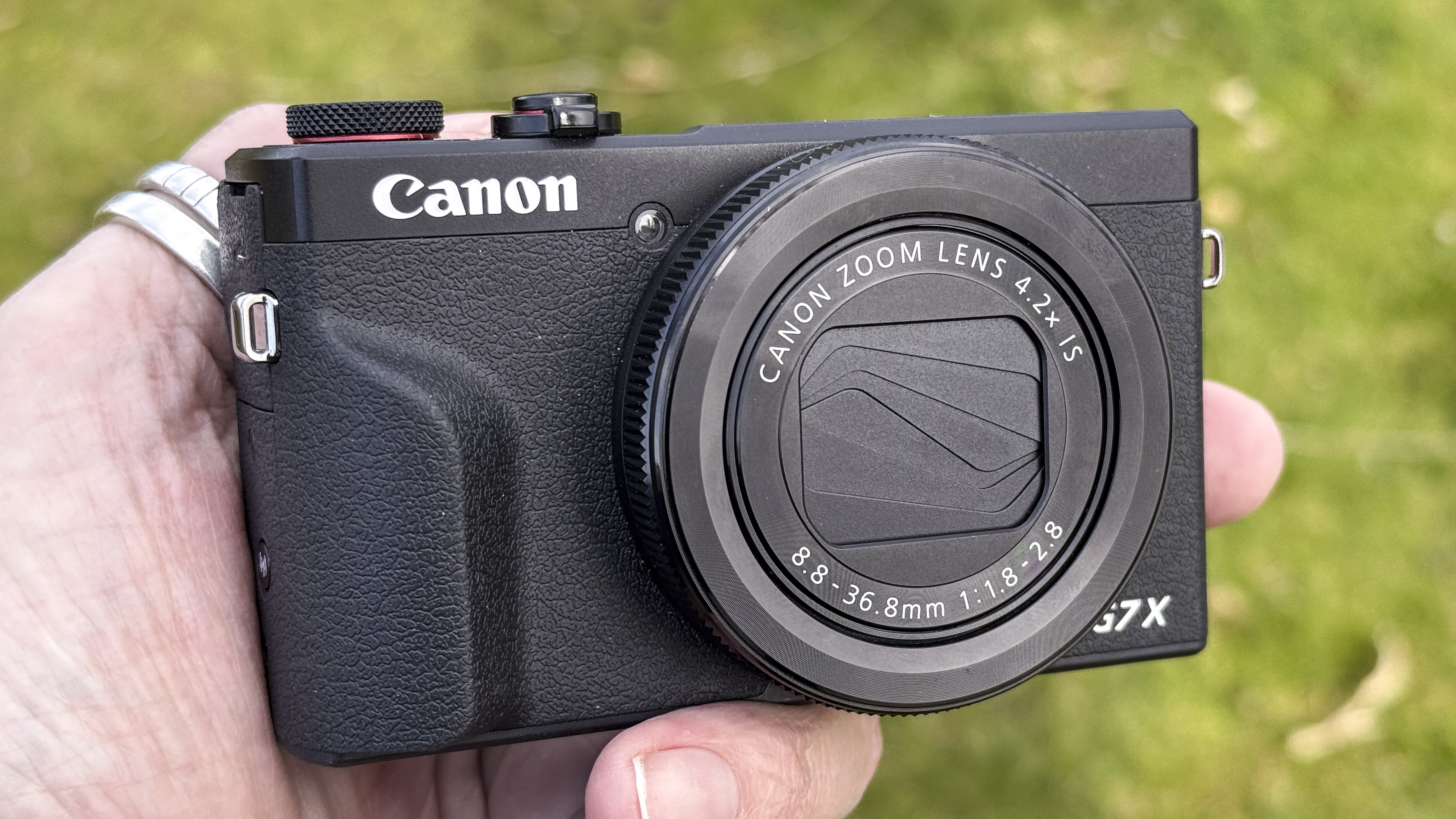Canon is planning to increase production of trendy compact cameras, but another tariff-fueled price hike is also in the works
The good news is that Canon is about to increase production of hard-to-find compact cameras, but that comes with the news of another tariff-induced price hike

Canon has shared the company’s fiscal results for the first half of 2025, and amid the number crunching, the company shared two key bits of data for photographers and videographers: The production of compact cameras will increase to help keep up with demand, but another price hike due to tariffs is also in the plans.
During the forecast for the remainder of 2025, Canon said that the vlogging-focused PowerShot V1 is selling well but that the company would also increase production for the conventional compacts that are in high demand. “As for Imaging, starting with cameras, we plan to expand sales of the new EOS R50 V which is starting to gain popularity,” Canon said in the report’s commentary. “In addition, for compact cameras, we will expand sales of the new PowerShot V series model and will also increase production of conventional models where supply is not keeping up with demand.”
Importantly, Canon did not specify which camera models would see increased production. However, there are three compact cameras that have long been listed as out of stock on Canon’s US website that the company could be referring to: The Canon PowerShot G7 X Mark III, the PowerShot G7 X Mark II, and the PowerShot SX740 HS. Canon said models plural, so that production increase seems likely to include at least one G7X model.
Canon’s G7X series has seen a resurgence in popularity, due in part to social media trends. Some of the camera’s renewed success seems to be among influencers, likely stemming from both the compact camera trend overall and the more flattering 24-100mm equivalent lens compared to the limited optics on a smartphone.
However, compact cameras have only recently started resurging in popularity and manufacturers have struggled to keep up with the newfound demand. That has caused used prices and those sold by third-party sellers to jump in price. In the US, for example, the Canon G7X Mark III is listed for $1,549 on Amazon. The retail price? $849. (In the UK, the G7X Mark II is £1,219 on Amazon and isn’t listed on Canon’s UK webstore.)
Canon indicates another price increase is coming in the US
While the increased production is good news for compact camera fans, during the investors' meeting, Canon said that it would respond to increased US tariff costs by increasing pricing. The fiscal report is still based on the 10 percent tariff pause, as the newly announced 15 percent tariff on Japanese imports wasn’t announced in time to be part of the company’s forecast for the remainder of the year.
Canon says that price increases will be part of the response to increased tariff costs in the US. “Based on this assumption, we expect tariffs to increase costs by 41.3 billion yen, which we will address through selling price increases totaling 35.2 billion yen. And due to price increases, we expect a decrease in sales volume in the amount of 18.7 billion yen. We have included this in our projection by business unit,” the report reads.
The best camera deals, reviews, product advice, and unmissable photography news, direct to your inbox!
The report does not note how much prices will increase, nor which of Canon’s business segments will be most affected. Canon has already increased the price of several cameras and lenses last month in the US only, in response to the tariffs.

Under the ten percent tariff pause, the price on cameras like the EOS R1 increased by about 7.9 percent. As tariffs are based on the declared value and not the list price, it’s possible the price adjustment on a 15 percent tariff could be slightly under 15 percent.
Canon is also reviewing production in the wake of the tariffs. “We are reviewing the way production sites should be operated from a perspective of geopolitical risks and productivity and budgeted for 20 billion yen in expenses, mainly to be incurred in the second half of the year,” the report said.
Canon said that demand for cameras remained high in the first half of 2025, contributing to a sales increase of 6.5 percent in the second quarter of 2025 for the imaging division. The company attributed some of that success to the newly launched EOS R5 Mark II, as well as the “favorable reception” for the PowerShot V1 and EOS R50 V.
That’s part of a company-wide two percent increase in net sales compared to the first half of 2024, which is the company’s highest net sales since 2007. Comparing only the second quarter of this year to the second quarter of last year, however, net sales declined by 2.4 percent despite overall first-half growth.
You may also like
Take a look at the best Canon cameras and the best Canon RF lenses. Or, stay up-to-date on the US tariffs' impact on the camera industry with our live blog.

With more than a decade of experience writing about cameras and technology, Hillary K. Grigonis leads the US coverage for Digital Camera World. Her work has appeared in Business Insider, Digital Trends, Pocket-lint, Rangefinder, The Phoblographer, and more. Her wedding and portrait photography favors a journalistic style. She’s a former Nikon shooter and a current Fujifilm user, but has tested a wide range of cameras and lenses across multiple brands. Hillary is also a licensed drone pilot.
You must confirm your public display name before commenting
Please logout and then login again, you will then be prompted to enter your display name.

